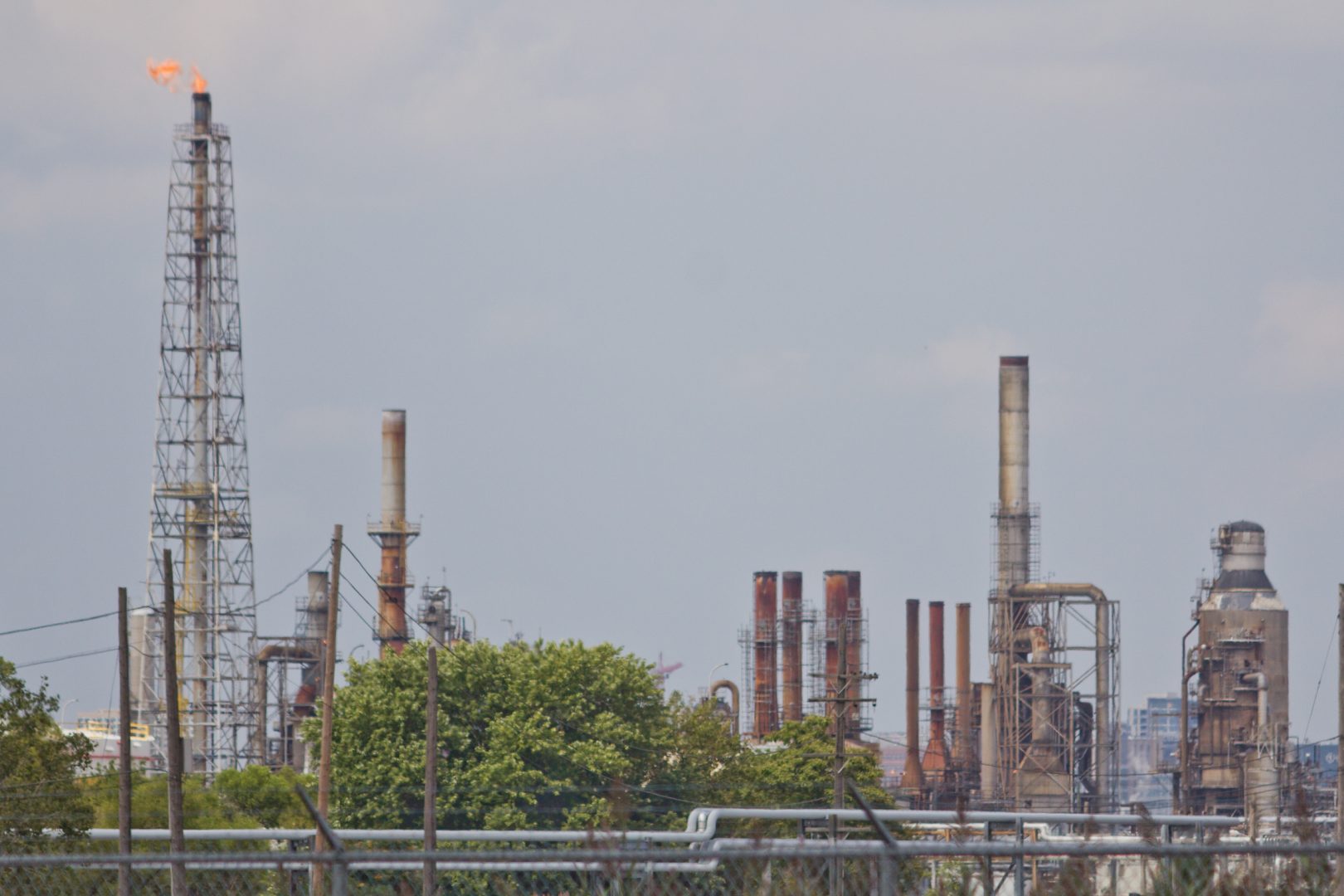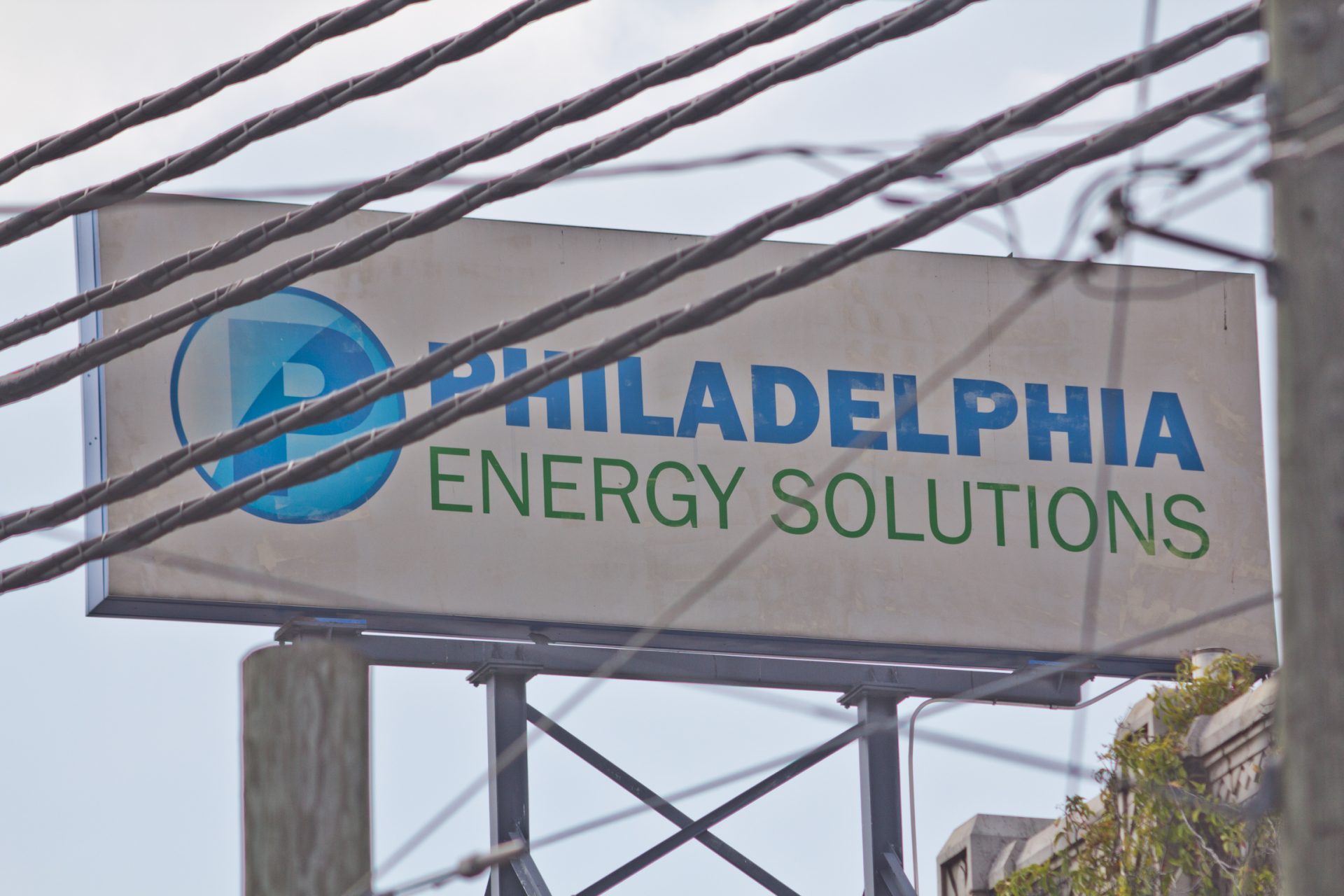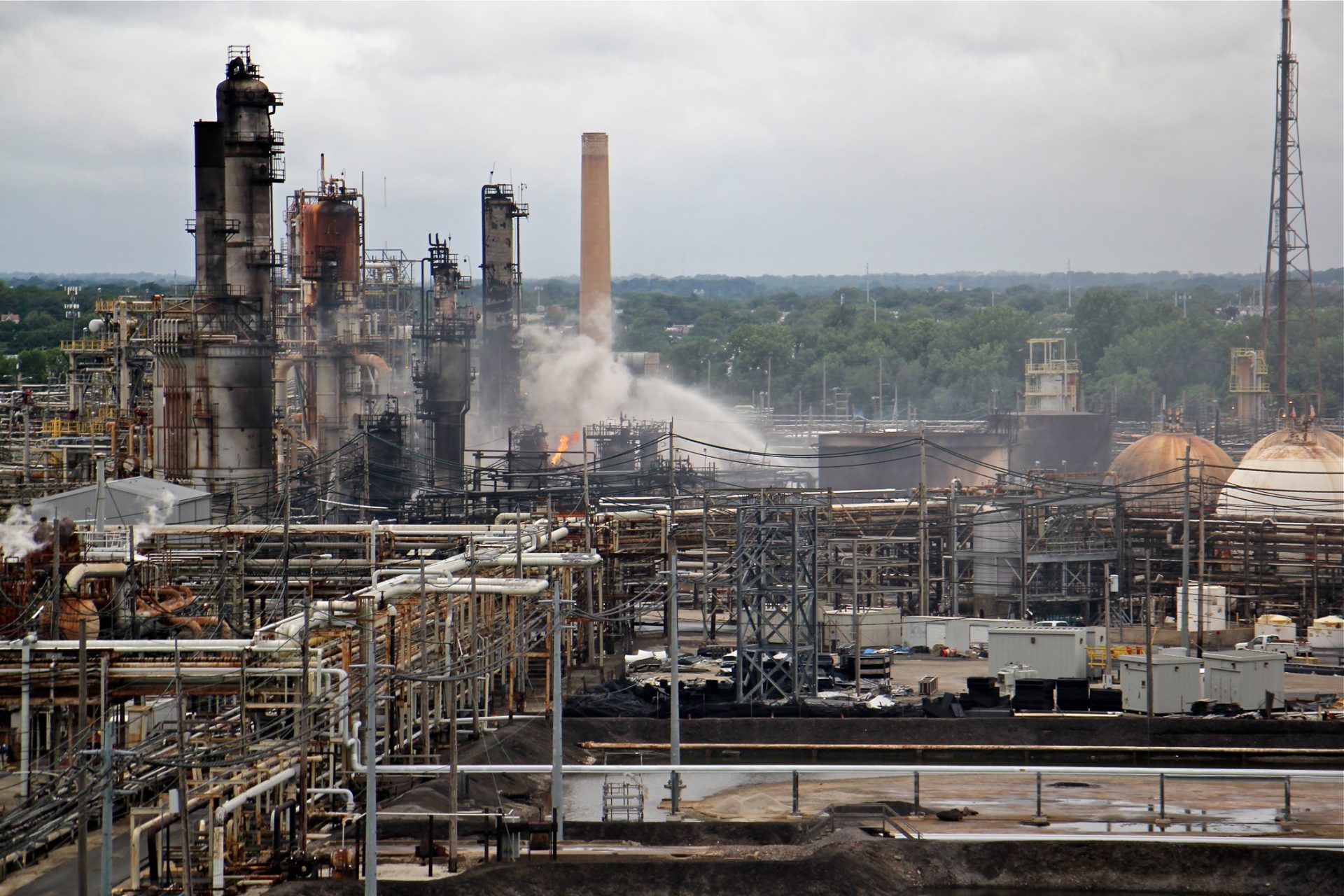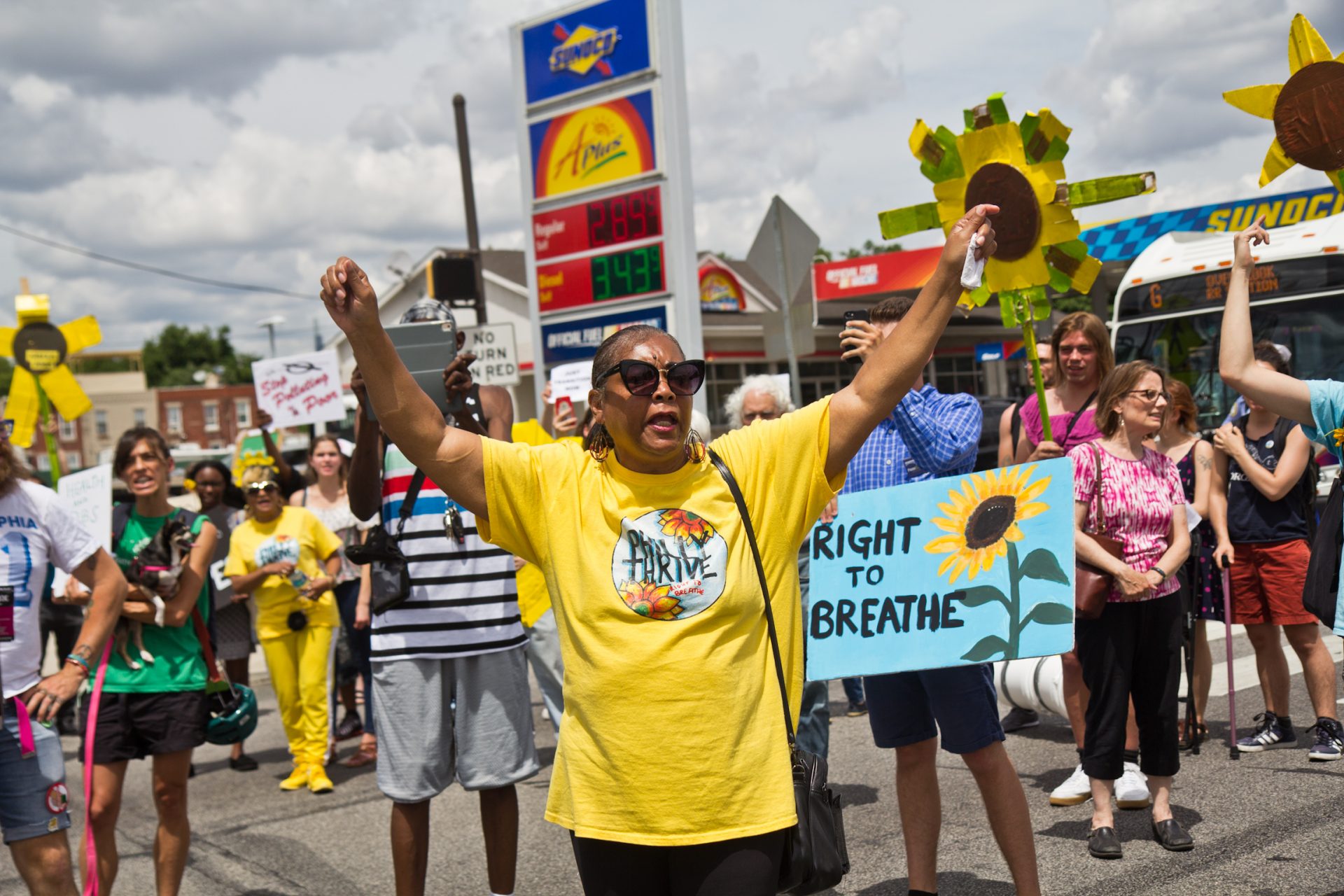
Philadelphia’s report on refinery site: A cleaner use, while desirable, isn’t likely in the short term
But the document also stipulates the city has limited control over the future of the complex.
-
Catalina Jaramillo

(Philadelphia) — The City of Philadelphia doesn’t see a cleaner use for the Philadelphia Energy Solutions refinery complex in the near future. It does, however, recommend one for the long term, in a report that concludes the work of the advisory group created in the wake of the catastrophic June 21 explosion and fire at the South Philadelphia site.
The Refinery Advisory Group conducted six public meetings during the summer. It was composed of more than 20 members, representing the community, academia, business and labor groups. The advisory group was co-chaired by city Managing Director Brian Abernathy and Fire Commissioner Adam Thiel.
The report, titled “A Close Call and an Uncertain Future: An Assessment of the Past, Present, and Next Steps for Philadelphia’s Largest Refinery,” stipulates that the city has limited control over the future of the complex.
A month after the fire, PES filed for Chapter 11 in U.S. Bankruptcy Court in Wilmington, and a sales-and-auction phase is in progress. The future of the complex will ultimately be determined by the bankruptcy court, with approval of a winning bidder currently set for January.
The refinery site is privately owned and predates the city’s zoning laws. As a result, the advisory board’s report says, the existing land uses are “grandfathered” in and allowed to continue in the future, unless a use is discontinued for more than three years. Therefore, a zoning change cannot prohibit another refinery from starting operations at the 1,300-acre site or mandate a change in the property’s use.
“Throughout, we’ve been pretty clear that the city had limited powers and limited influence, that we did expect to exert that influence through the bankruptcy proceedings to the greatest extent possible, and that there were certain things around city operations that we would certainly look at and review,” Abernathy said. “But as far as the future of the site, I opened every public meeting the same way, which was: We don’t own the site, it’s a private site, it’s in bankruptcy proceedings, and that the bankruptcy judge will ultimately make final determinations.”

Kimberly Paynter / WHYY
Philadelphia Energy Solutions refinery in South Philadelphia. Workers are in the process of neutralizing a highly toxic substance as part of a shut down.
The advisory board report discards condemnation of the site as an option in the “near-term.” Although the city has no legal authority over privately-owned land, residents demanded that it use its powers to take title to the property via eminent domain. That would be too costly, the report says, because the city would have to compensate the owner, paying fair market value. It also notes that by condemning the property, the city would inherit liability for cleanup of contaminants there.
“Both of these issues would be subject to lengthy and time-consuming litigation, and the total process would likely cost taxpayers hundreds of millions of dollars (or more) — funds that the city does not have available for this purpose,” says the report, authored by Abernathy and Thiel.
Clean Air Council director Joseph Otis Minott called the report a good first step in continuing the dialogue with the public on what happens at the refinery site, by clarifying the city’s views on it and documenting the comments submitted during the advisory group’s meetings. Yet he also said the report falls short in exerting the city’s authority to influence the site’s fate.
“The city might be able to be a little bit more aggressive, in terms of shaping what the future of the property can be used for, than is suggested in this report,” Minott said.
David Masur, PennEnvironment director, agreed. He said the report is a mixed bag because the city recognizes the need for a cleaner and safer option at the refinery site, but at the same time “waters down” what it has the ability to do.
“The city sort of said they want a clean facility but their hands are tied, and that’s just not true. The city has enormous power and ability to make sure that whatever is on that site is clean and healthy. The city has the ability to set and enforce air pollution, to set a strong standard for water quality, and to take a strong position,” Masur said.
Ryan O’Callaghan, of United Steelworkers Local 10-1, whose membership includes about 640 of the now laid-off refinery workers, said that the advisory group’s report is “in-depth and all inclusive,” and that it does represent the views of the members of his and other labor unions.
“The only way to provide the high-paying, high-skilled jobs is to keep it as a refinery,” O’Callaghan said.
But, he said, that does not exclude other, cleaner uses, as the report suggests.
“In the realization that the city has grown around the refinery, there are some things that I hope the new buyer can do. There’s plenty of room in that refinery for solar panels or anything else like that,” O’Callaghan said.
Labor welcomes stronger regulation of the use of hydrofluoric acid and other chemicals to safeguard public safety and the environment, he said.
“We want to protect the environment for ourselves, and for our family members, and for the community members. Those of us who work in the refinery, we want to be safe. So any other safety or environmental safety precaution that can be taken, we are all for,” he added.

A fire burns at the Philadelphia Energy Solutions refinery hours after a series of early morning explosions at the 150-year-old industrial complex at 3100 W. Passyunk Ave. (Emma Lee/WHYY)
Long-term recommendations
Despite limited ability to affect the short-term future of the refinery complex, Abernathy told City Council at a Friday hearing that the city is willing to use its influence to favor and encourage a future use of the site that sets public safety as a priority, has a more positive impact on public health and the environment, provides long-term economic benefits to the city and good jobs to its residents, gives surrounding communities ways to engage in a meaningful way, and allows for multiple uses and activities there.
“We do want to use what influence we can to get the best outcome for the city. Exactly what that influence will be is yet to be seen,” Abernathy told Council.
One of the tools the advisory group’s report mentions is Pennsylvania’s Keystone Opportunity Zone program, which gives tax breaks for up to 10 years to encourage business at abandoned sites. Although the refinery’s KOZ designation expires in December 2023, the report stipulates that the designation is not a guarantee for any new owner of the refinery and that the city would only consider for the designation those uses that met its goals. The city could also leverage its influence by approving or denying assistance in building needed infrastructure on the site, such as streets, water, sewer, or river access, according to the report. Or it could use targeted assistance for specific initiatives, such as entering into a power purchase agreement to encourage the development of solar or wind energy on portions of the site.
The report also recommends strengthening regulations and possibly banning use on the site of hydrofluoric acid, a deadly chemical that was released during the explosion and fire in June, and other dangerous chemicals, to minimize the risk to nearby communities.
The city also should evaluate its air-monitoring system to protect public health in emergency situations like the refinery fire, the report recommends. Currently, the city monitors general ambient air pollution at 10 monitoring stations to comply with federal regulations. But experts in the Refinery Advisory Group said the closest air meter to the fire was in the opposite direction in which the wind was blowing, leaving the city uninformed about the air impacts of the fire.
In its report, the advisory group also recommends that the city review its planning and response capabilities around hazardous materials more broadly. Thiel, who is also the city’s emergency management director, told City Council last week that he is already working toward that goal, but that more resources are needed. So far, the response to the refinery fire has cost the city more than $2 million.
“We’re already getting the resources to be able to improve our ability to communicate 24/7, 365, both internally to the city government and with all the state and federal partners that are involved in such an incident, as well as with the community,” Thiel said.

Sylvia Bennett, a member of Philly Thrive, raises her arms at a protest outside Philadelphia’s PES refinery. (Kimberly Paynter/WHYY)
Among the advisory group’s recommendations for a future refinery-property owner are to have better pollution control, to develop renewable energy at the site, to take into consideration plans to mitigate climate change effects such as sea level rise, which could leave the site underwater in the future, and to accommodate public access on portions of the site.
WHYY is the leading public media station serving the Philadelphia region, including Delaware, South Jersey and Pennsylvania. This story originally appeared on WHYY.org.


